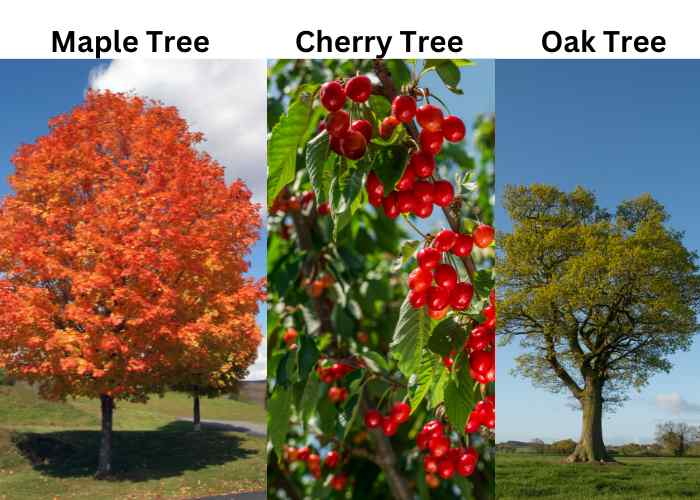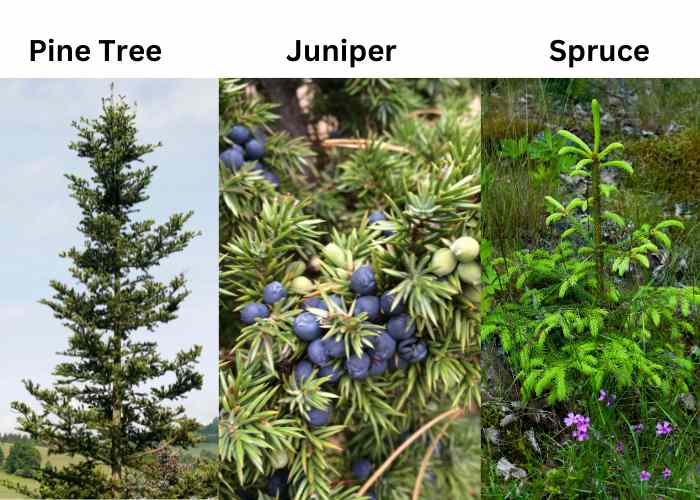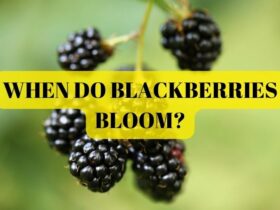I am sure you would have heard about deciduous and coniferous trees. But do you know about them? What they are, what’s the difference between the two?
This article will cover deciduous trees vs coniferous trees. So, stick around and read through both characteristics to know the difference between them!
DECIDUOUS TREES

Grown for their ornamental decorative value, deciduous trees shed their leaves during the autumn season.
They are green and full of young new branches in spring, while they lose them in winter and autumn to conserve water during cold temperatures.
As the trees are big, they require more sunlight and water for photosynthesis, so they must shed their leaves during winter to save energy.
The type of trees the deciduous family has are long single-stem woody trunks that develop to a great height when mature.
They have a bushy habit and vary in size from big tall trees to small ones that can be grown in big pots.
Examples include Flowering dogwood, maple, oak, birch, locusts, cherries, magnolias, and more.
CONIFEROUS TREES

The evergreen cone-shaped trees growing needle or scale-like leaves are called coniferous trees.
The trees of the coniferous family are mostly gymnosperms meaning their seeds are exposed (no outer covering).
They are mostly found in tropical rainforests and temperate forests, although they can survive varying environmental conditions.
Did you know? They’re more than 600 different species of coniferous trees that are differentiated based on their needle type and foliage shape.
Examples include pines, spruce, fir, hemlocks, pinus sylvestris, Juniper, and more.
DECIDUOUS TREES VS CONIFEROUS TREES
| Deciduous Trees | Coniferous Trees |
| Decorative trees that shed leaves seasonally | Evergreen cone-shaped trees having needle or scale-like leaves |
| Summers are considered the re-growth period for deciduous trees. | As they’re usually evergreen, so no re-growth period |
| Leaves are flat and broad | Coniferous trees have needle-like pointing leaves |
| Produce hardwood that is used for heavy wood works like flooring etc. | Used in making paper and furniture sometimes. |
| Examples: Birches, maple, and oak. | Examples: Pine, fir, and cedar. |
DECIDUOUS CONIFERS
A few species of trees show characteristics of both conifer and deciduous trees. They are called deciduous conifers.
They form cones with needle-like leaves but change color and shed their leaves during autumn or winter.
Such trees include larch, dawn redwood, bald cypress, etc.
DECIDUOUS VS CONIFEROUS VS EVERGREEN
As explained above in deciduous trees vs coniferous trees, deciduous trees shed their leaves yearly. While coniferous trees are evergreen (majority), have scale or needle-like leaves, and produce cones.
Evergreen trees do not shed their leaves during any time of the year.
So, not all evergreens are conifers, as a few shed their leaves during autumn (tropical trees and shrubs).
THAT’S A WRAP!
The article details deciduous trees vs. coniferous, their characteristics, and examples.
I have mentioned everything from their appearance to their growth cycles.
Deciduous versus coniferous have also been mentioned in the table to clarify the differences.
I have also defined the deciduous conifers, a blend of deciduous and coniferous trees.
And lastly, I have briefly explained how deciduous, coniferous, and evergreen are different.
Have you got more questions about deciduous trees vs coniferous trees? Here’re the answers to the most frequently asked questions.
FREQUENTLY ASKED QUESTIONS
What is the difference between evergreen and deciduous trees?
As the name suggests, Evergreen remains green throughout the year and doesn’t shed leaves during autumn or winter. On the other hand, deciduous trees shed their leaves during autumn or winter.
Is coniferous an evergreen?
Most of the coniferous are evergreen, but a few species grow and shed leaves seasonally.
How are coniferous and deciduous trees alike?
Both coniferous and deciduous trees grow in forests.
Follow @kitchenandgardening for more!














Leave a Reply